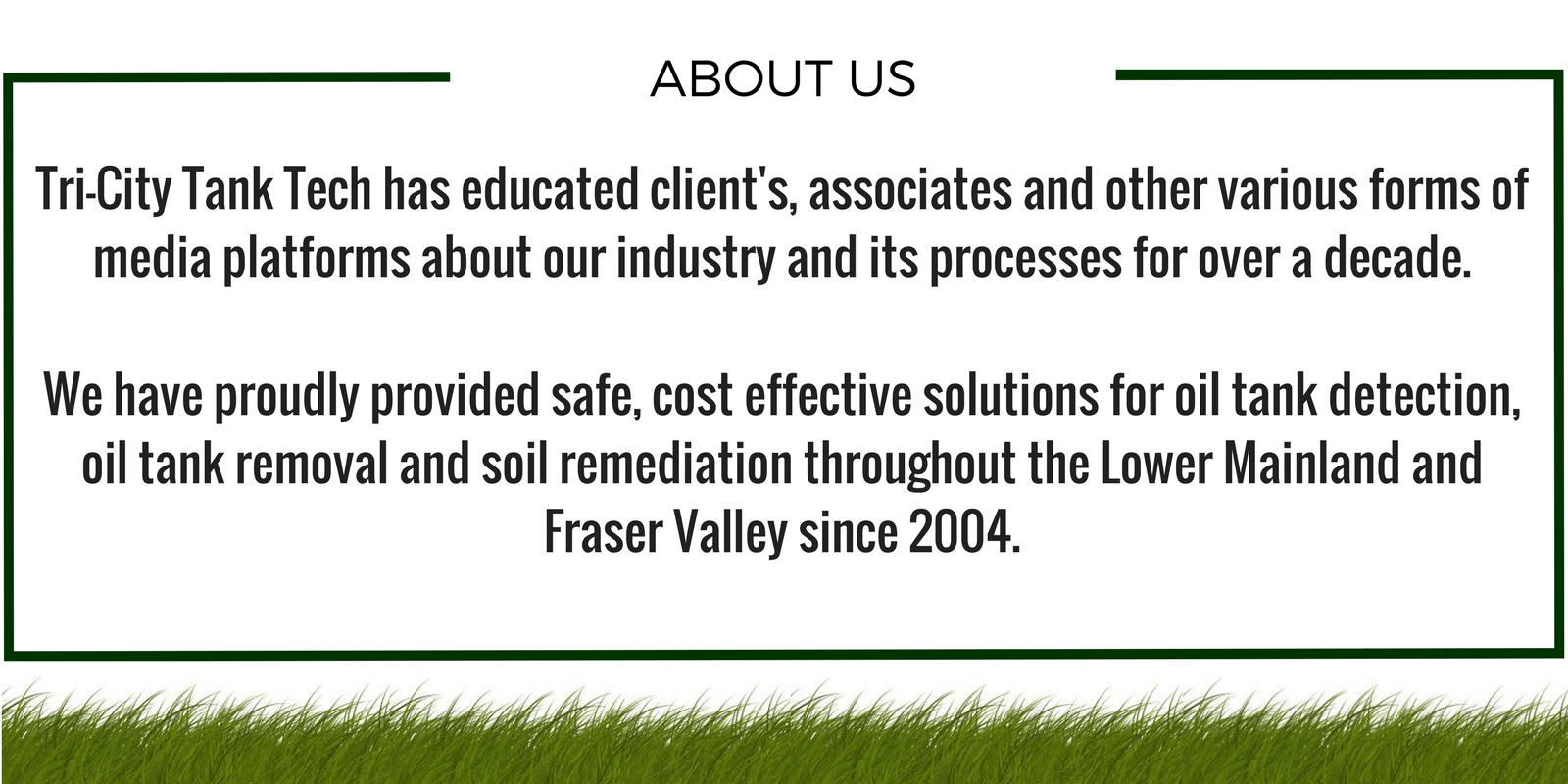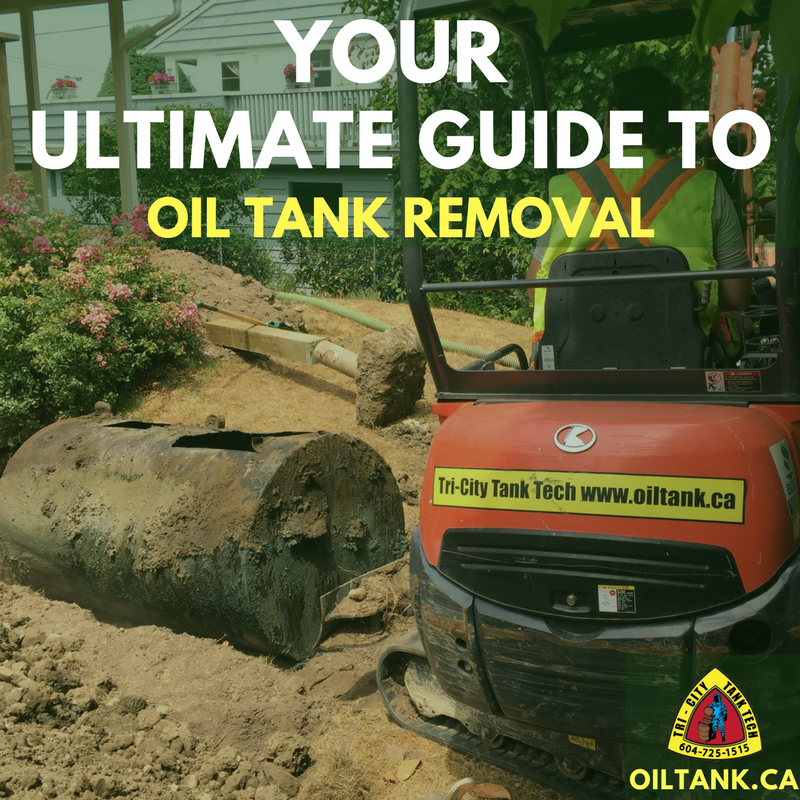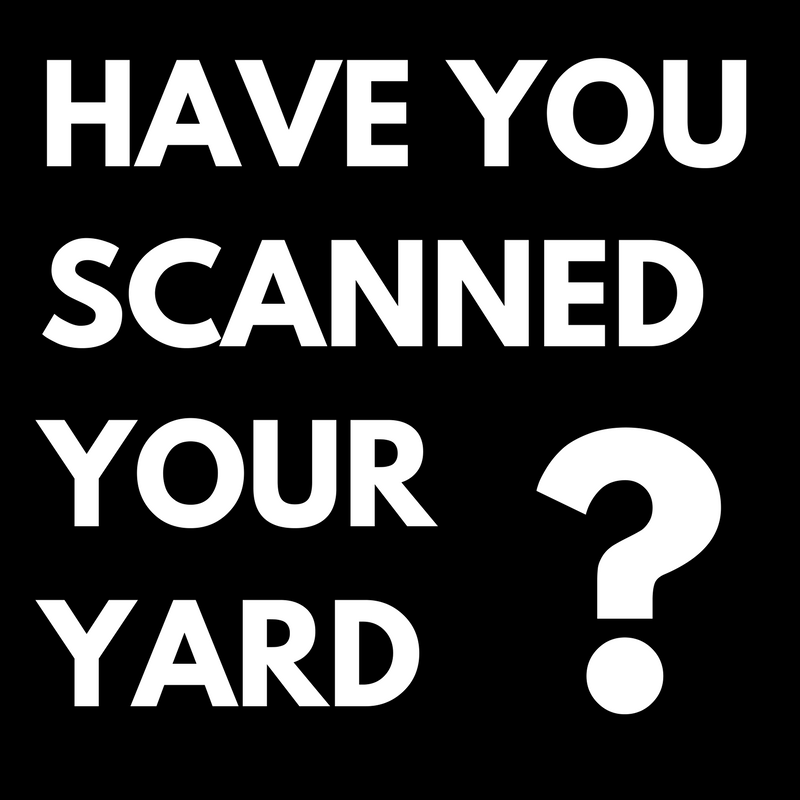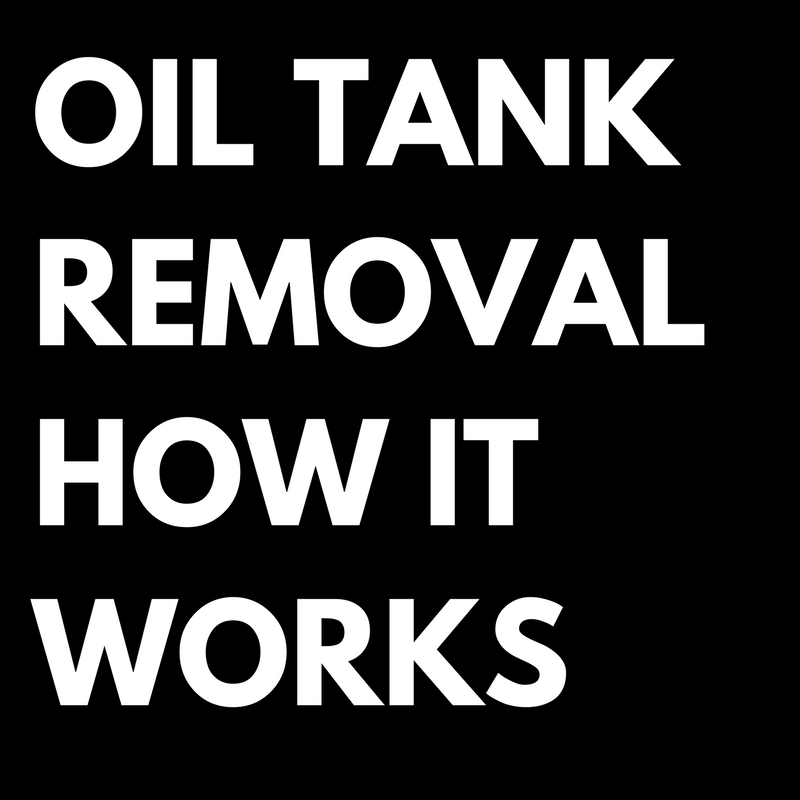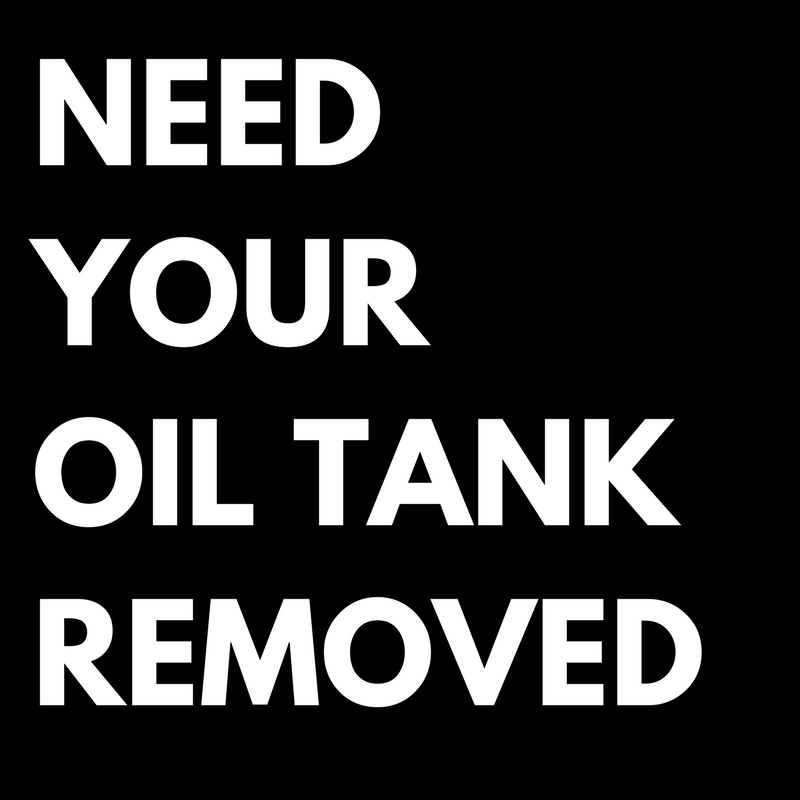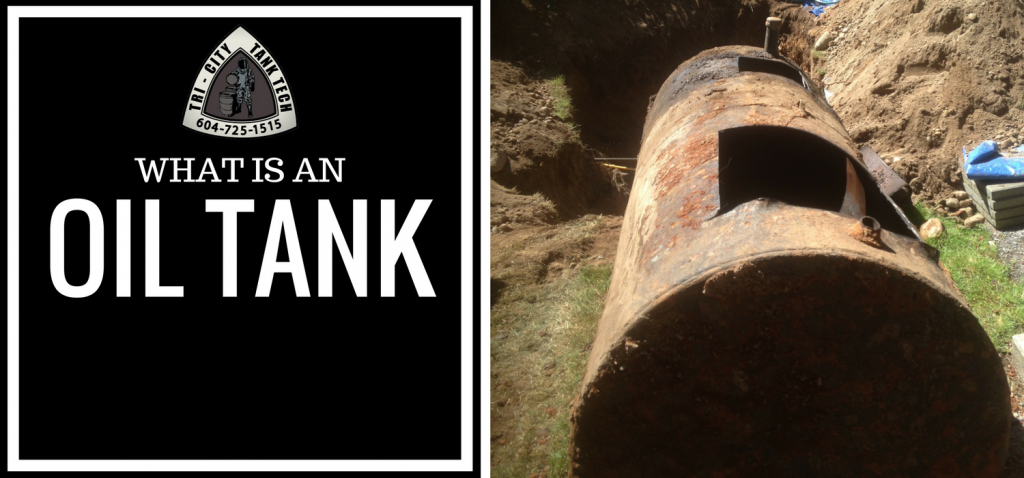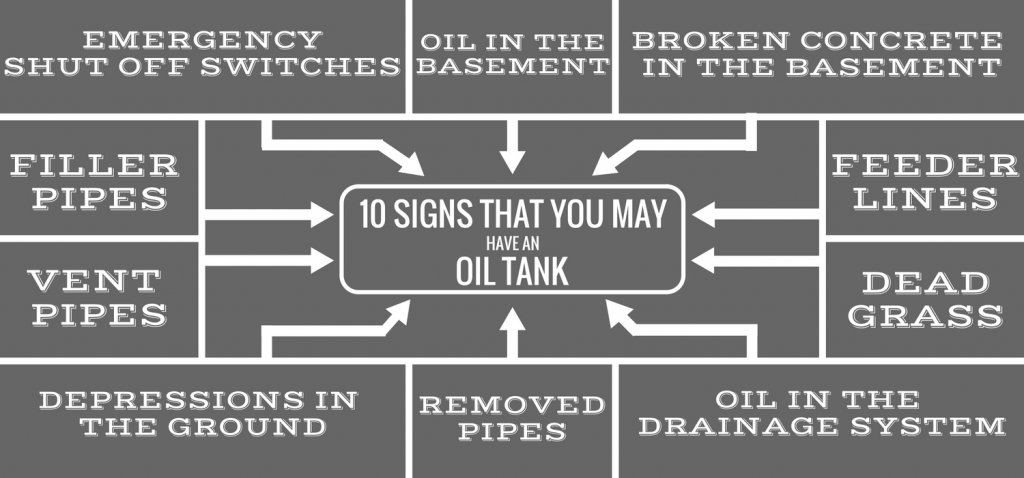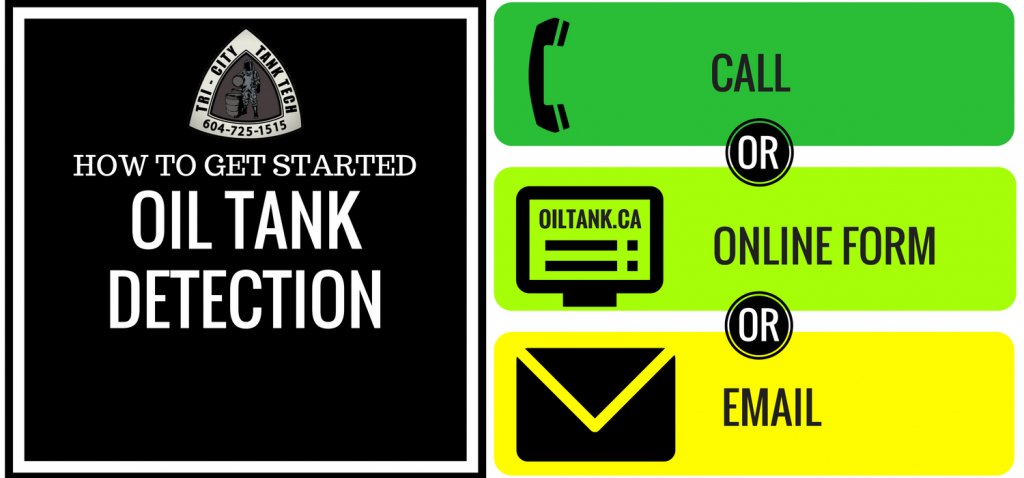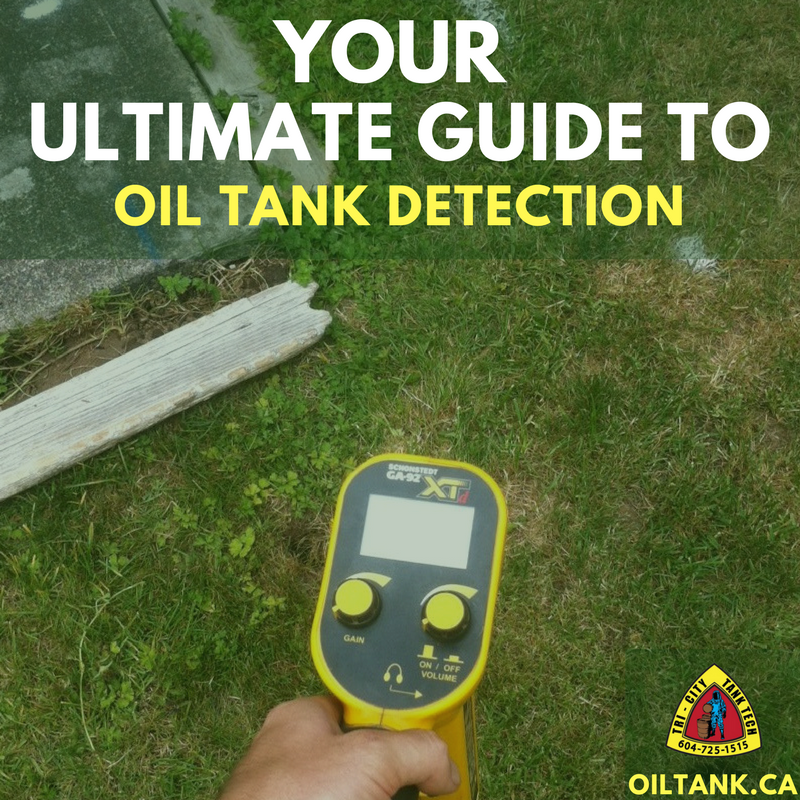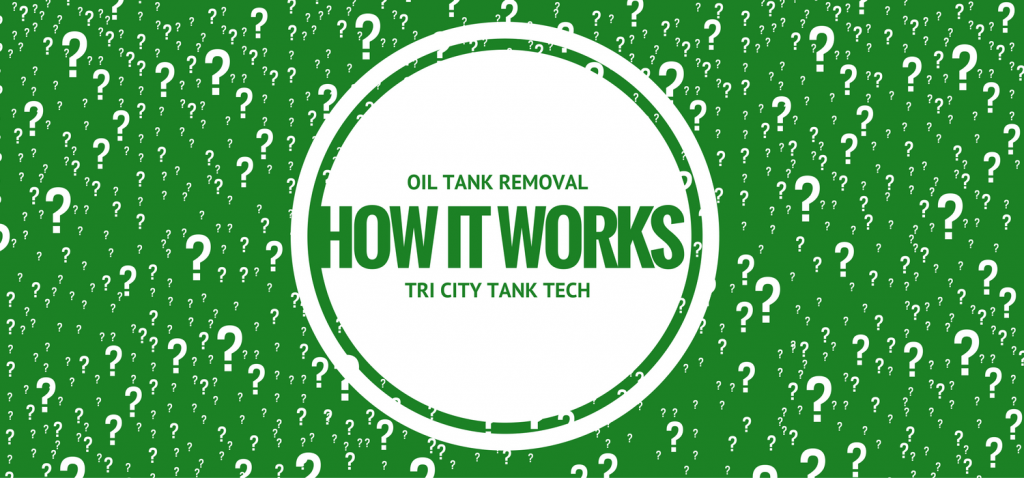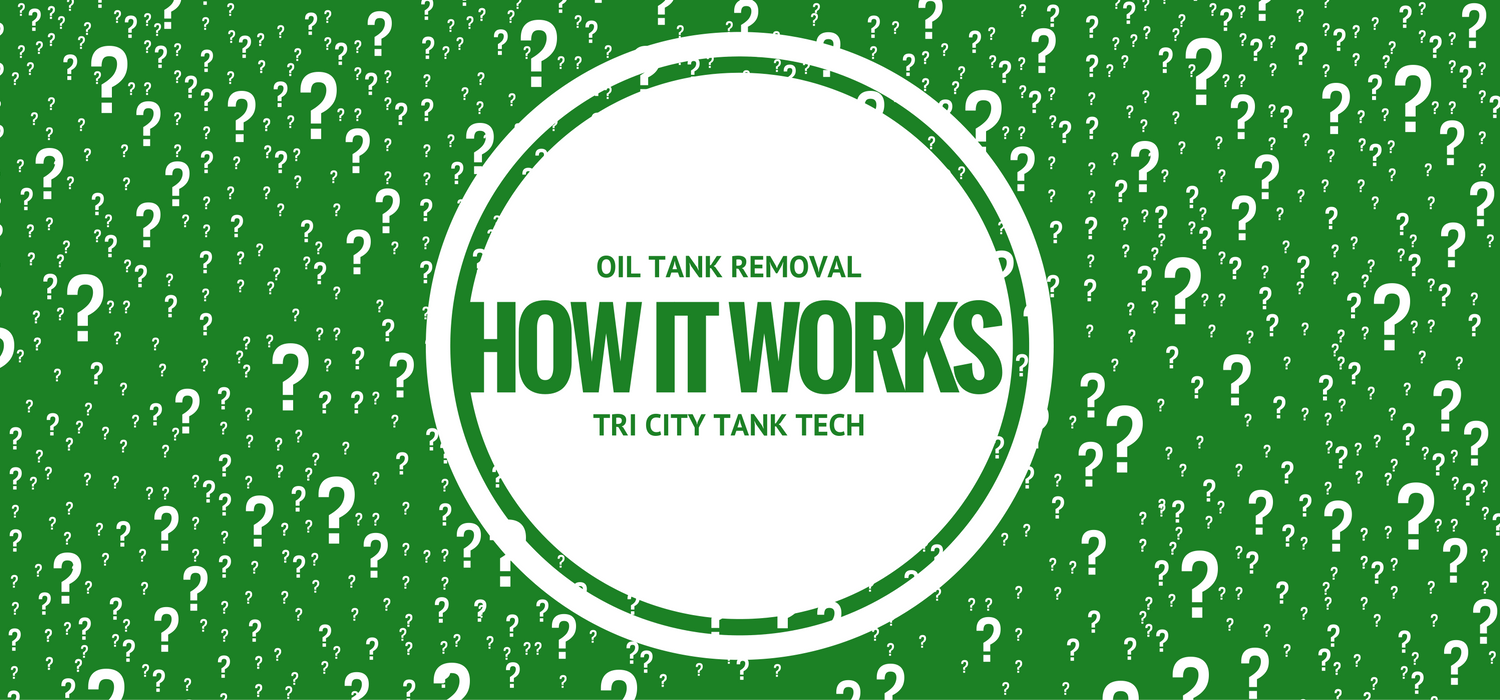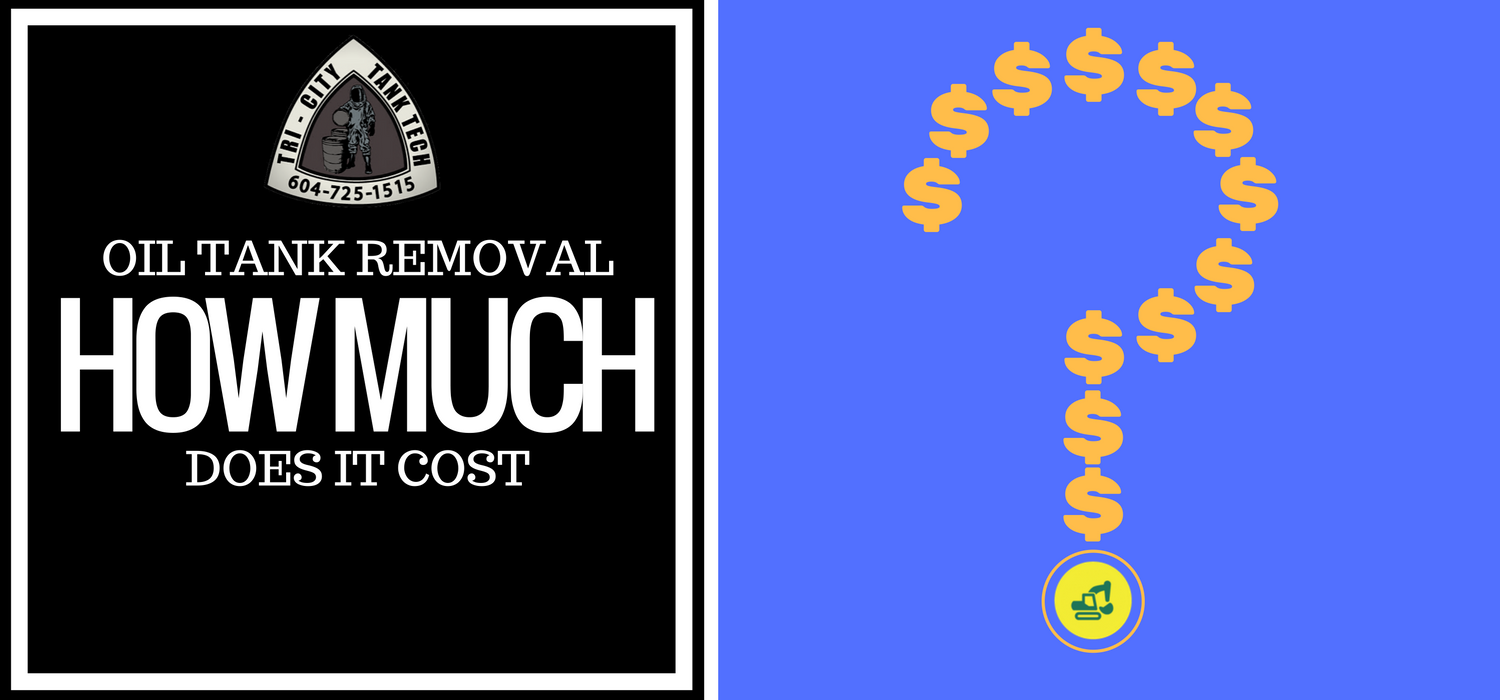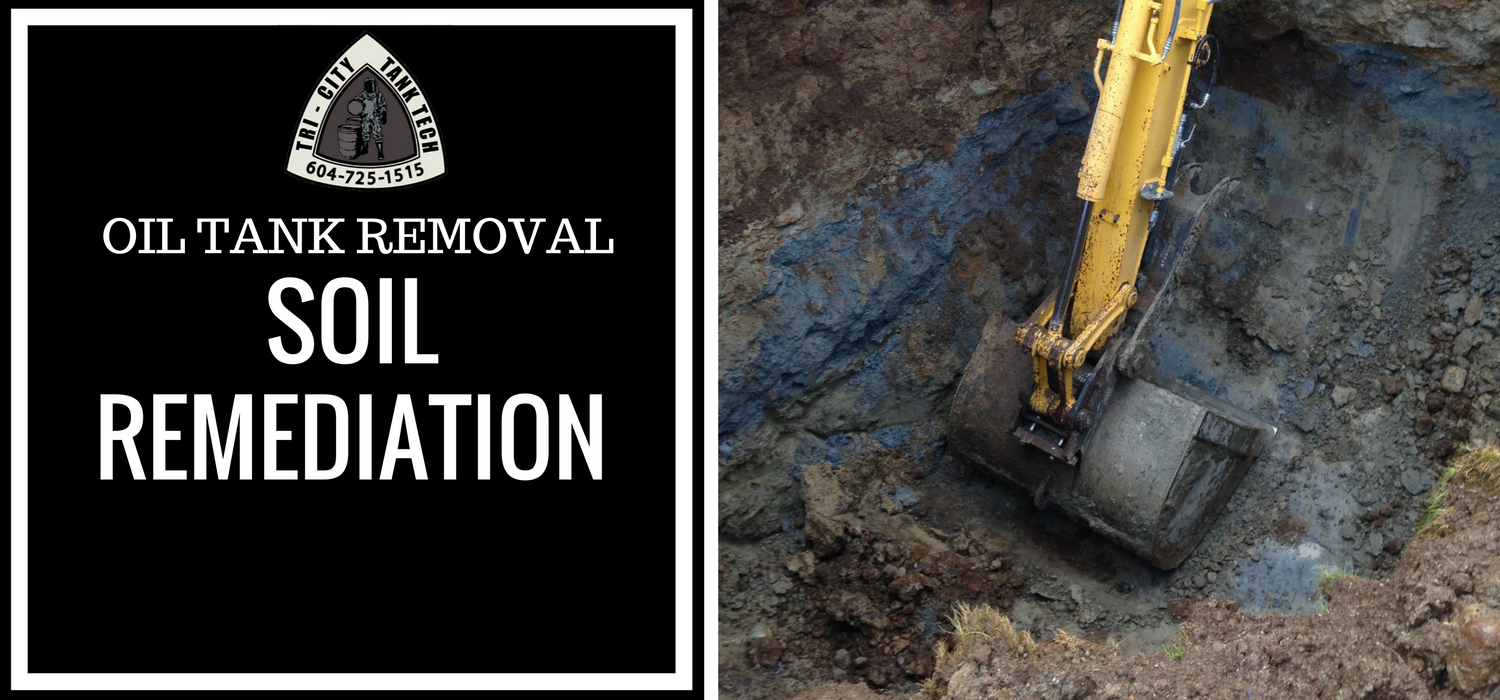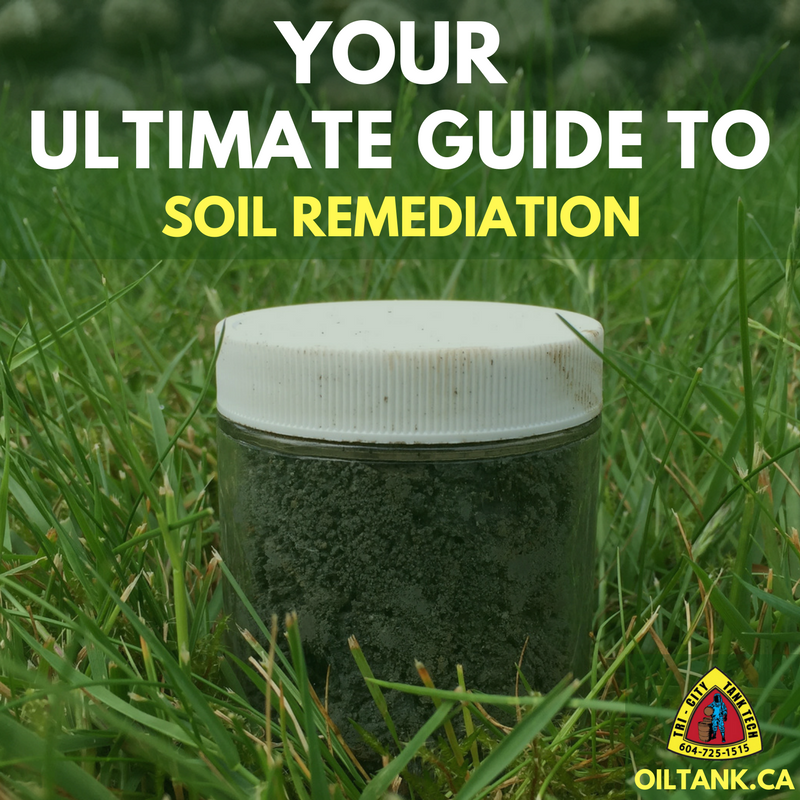The oil tank removal process can be confusing, as each city has its own set of rules and regulations governing the removal of your oil tank.
If you have never had to deal with an oil tank removal it can be hard trying to find the answers you need online.
Unfortunately, when people try to search online about the oil tank removal industry, they will usually come across articles that tend to focus on the extreme cases and do not focus on what you need to know.
WHY CHOOSE US
FIND OUT WHY TRI CITY TANK TECH IS THE PREFERRED CHOICE OF REALTORS, BANKS, HOME INSPECTORS AND MORE...TRI CITY TANK TECH | YOUR OIL TANK REMOVAL EXPERT
- COMPETITVE PRICING
- FREE QUOTES
- QUICK RESPONSE TIMES
- KNOWLEDGABLE STAFF
- EXPERIENCED
- HIGH QUALITY EQUIPMENT
- QUALITY SERVICE
- A+ BBB
- INSURANCE COVERAGE
- WORKSAFE COVERAGE
Oil Tank Removal: What Is An Oil Tank
To understand the importance of an oil tank removal, it is helpful to know what an oil tank is and why they were used.
In Greater Vancouver before natural gas was the most common source for heating homes, oil tanks were one of the most efficient methods to keep out the cold.
A standard buried oil tank is cylindrical and can vary in size. Most oil tanks are approximately 8 ft long by 3 ft wide and buried approximatley 3ft – 4 ft under the surface of the ground.
Due to their size, many homeowners usually opted to have their oil tank or underground storage tank (UST) buried underground for aesthetic purposes.
For older homes, there were other options for heating that may have been installed when the house was initially built;however, it is important to note that the heating source may have converted to fuel oil heating when it became more readily available.
Other alternative fuel sources included:
- Coal burning furnaces
- Sawdust burning furnaces
- Wood burning chimneys
In comparison to these alternative fuel sources, oil tanks were seen as a space saving, cost effective solution that usually required less direct work from the homeowner.
Instead of having to devote an area in the house to store coal or wood and manually load the furnace, oil tanks just had to be filled up occasionally by a fuelling truck and were many times buried out of site.
Standard residential oil tanks usually contain diesel;however, depending on the type of property (Residential or Commercial), Underground Storage Tanks (U.S.T’s) can contain a wide range of contents.
Commercial U.S.T’s can contain various types of liquids depending on the type of business, for example:
- Gas Stations: Gas and/or diesel
- Automotive service centers: Motor oil
- Dry Cleaners: PERC and various chemicals.
Oil Tank Removal:
Signs That You May Have An Oil Tank On Your Property
The most common signs that you may have an oil tank buried on your property are:
• Filler pipes
• Vent pipes
• Feeder lines
• Emergency shut off switches
• Depressions in the ground
• Oil present in the basement
• Broken or replaced concrete in your basement
• Oil present in your drain tile, septic system
• Dead grass
• Evidence of pipes removed
Unfortunately, it is common that pipes, lines or switches may have been removed over time. So the best way to determine if you have an oil tank on your property would be to get an oil tank detection.
A Couple Reasons That Oil Tank Related Indications May Have Been Removed Are:
- Tripping hazards
- Aesthetic purposes
- Renovations
- Not knowing what the pipe was for
- To hide the evidence of a buried oil tank on the property
- A previous oil tank abandonment
Oil Tank Removal:
Top 8 Reasons to Remove Your Oil Tank
So now that you know what an oil tank is and why they were buried, let’s go over the most common reasons for an oil tank removal.
- Property transactions
- Mortgage renewals
- Home insurance renewal
- Complying with local government regulations
- Preparing for a renovation: e.g. Building a new deck, coach house or addition.
- Being proactive
- Health and Safety
- Reducing, preventing or mitigating the risk of potential leakage from your oil tank.
Oil Tank Detections: How To Get Started
Most people do not know if they have an oil tank property until their insurance company, realtor, or lender asks them if they’ve had an oil tank detection on their property.
If there is no oil tank found on your property during your oil tank detection, you will receive an oil tank detection certificate to provide to anyone who requests it.
If we find an oil tank on your property, we will provide you with a free quotation for oil tank removal.
How to set up an oil tank detection:
Feel free to contact us or fill out our Book-your-Scan form online.
When you contact us, we will go over some pre-inspection questions to help ensure your property is ready to scan and to reduce the risk of exemptions.
From that point we can typically scan your property within 1-2 days.
Alternatively, if you know that you have an oil tank on your property:
- You can fill out our Book-your-quote form online for your Free Oil Tank Removal Quotation.
- Or you can call us and we would be happy to assist you
Oil Tank Removal:
How It Works
Step 1: Oil Tank Detection
First we will identify the orientation of your oil tank and look for any hazards or obstructions in the area.
Step 2: Free Quotation
Next we will provide a FREE detailed quotation with no hidden fees.
This is very important, as some companies will end up charging additional fees once they have removed your oil tank.
For example, initially there quotation may be $100 less than other quotes but when it is time to fill your excavation they will charge hundreds of dollars more in additional fees to backfill.
Essentially, they may charge you additional fees for materials and labour to make your yard safe again.
Step 3: Obtain Your Permit
We like to make the oil tank removal process as hassle free as possible. This is why we will apply for your permit at no additional charge.
Step 4: Set Up Fire Warden Inspection
This step is very important to the overall oil tank removal process.
In some cities, once your oil tank has been removed a fire warden has to come to your property to inspect and document that your oil tank has been removed.
If this step is missed, once your final report is submitted to the appropriate bodies, you may have to re-excavate the area for an inspection.
We will schedule your fire warden inspection if it is necessary in your city at no extra cost.
Step 5: Oil Tank Excavation
Now that we have identified the orientation of your oil tank and any potential obstructions, we begin the oil tank removal process.
Many times we can use our mini excavator which is under 3.5 ft wide to remove your oil tank.
Additionally, all of our excavators have rubber tracks helping to minimize the impact on your property.
Step 6: The Pump Out
Once your oil tank has been exposed. We safely cut holes in your oil tank to prepare for it for the pump out.
Once the contents of your oil tank are pumped out, your oil tank is flushed properly to remove any residue in your oil tank.
It is important that your oil tank is cleaned before it is removed. This helps to ensure that there is no spillage when extracting your oil tank.
Additionally, disposal facilities require that the inside of oil tanks are cleaned properly before they will accept it.
Step 7: Oil Tank Removal
Now that your oil tank has been properly cleaned we remove your oil tank and set it aside in a safe location.
Step 8: Soil Sampling
Once your oil tank has been successfully removed, an independent environmental consultant will usually take a minimum of 5 samples to provide a full spectrum of the excavation.
This step is the possibly the most important part of the oil tank removal process. Most cities require that a qualified environmental consultant take the appropriate samples during oil tank removals.
Even if your city does not require it, we recommend that a environmental consultant takes the samples from your excavation for a couple reasons:
Environmental consultants…
Provide an independent assessment of your excavation, so there is no conflict of interest.
Environmental consultants…
Provide an environmental report upon completion of the project. If an oil tank company takes your samples, you will most likely just receive the soil sample results as part of the final report.
It is important to note that regaurdless of your cities requirements, many buyers, lenders, insurance companies may require an enivronmental report.
So if you only have the sample results from your excavation, you may be asked to get an environmental consultant to resample.
Environmental consultants…
Have been trained to follow proper sampling protocols and to analyze your sample results correctly.
Environmental consultants…
Environmental reports hold more weight, as they are made by a qualified professional.
Even if your city does not require an environmental consultant at the time, they may change the rules in the near future.
You may be grandfathered in because it was not required at the time;however, this may make outside parties question your report.
If your dealing with an outside party, for example: prospective buyer, lender or insurance company they may have there own preferences regarding sampling and the reports that they require.
Step 9: Fire Warden Inspection
We will set up your fire warden inspection so that they arrive after your oil tank has been removed. Once they are finished their inspection they document their in their records and sometimes sign your permit.
Step 10: Recycle Your Oil Tank
The oil tank is then taken to a registered facility for proper disposal.
Step 11: Sample Results
Once your samples results are back from the laboratory, we will call you and go over the results.
If your sample results are below the acceptable legal limit, we will schedule to backfill your excavation.
If your samples are unfortunately contaminated, we will explain the soil remediation process in depth and provide you with a detailed contaminated soil removal quotation.
Step 12: Backfill
Now that your samples have came back under the acceptable legal limit, we can start the backfill process.
At no additional charge, we will backfill your hole, topsoil the area if needed and clean up the work area. Many times our clients comment that their yard looks better than before we started.
Step 13: Final Report
Upon completion of your oil tank removal project, you will receive our final report including pictures and supporting documentation.
This report will be sent to the involved environmental consultant and to the appropriate governing body.
Your final report is very important because without it, you do not have any records that prove that your oil tank was removed properly.
Oil Tank Removal:
How Much Does It Cost To Remove An Oil Tank
As every property is unique, so are the costs involved in the removal of an oil tank.
There are many contributing factors that determine the cost of an underground oil tank removal, such as:
- Accessibility
- Utility obstructions (overhead and underground)
- Structural obstructions (decks and additions)
When you get a quote for an oil tank removal it is crucial to ask these few key questions to help protect you and your pocketbook:
- How long have you been in business?
- Do you have Worksafe BC Coverage?
- Do you have liability insurance?
- Is backfill included in your pricing?
- Do you provide a proper report with supporting documentation upon completion?
Oil Tank Removal: Soil Remediation
Once your oil tank has been removed, it’s time for samples to be taken from the excavation.
This is typically the source of most property owner’s oil tank removal anxieties; however, usually contamination removal is quite standard and is not as extreme as you may hear in media.
In the field, the two most common noticeable characteristics of soil contamination are hydrocarbon odours and blue discolouration.
If your soil has blue discolouration and does not have any odour present, there is usually a higher probability that over time the hydrocarbons have diluted/degraded below the allowable limit.
This means that if there is no odor present in your soil, there may be a higher probability that you do not have contaminated soil on your property.
On the other hand, if vapours (odours) can be detected in the soil, there is usually a higher probability that the soil sample results will be above the acceptable allowable limits set by the Ministry of Environment.
The above are just “rules of thumb” in the field and should not be relied upon to determine if a property is initially contaminated.
Regardless of what characteristics are present in the field, the most accurate way to assess the contents of your soil is through proper testing in a certified laboratory.
If contamination is found on your property, most projects are not like the ones that you may have heard from a friend of a friend.
Every property is unique and should be assessed by an environmental consultant on an individual basis.
There are many elements that contribute to the presence and spread of soil contamination:
- When did the tank start to leak?
- How much oil was left in the tank?
- Is your property sloped?
- Does your property have a high water table?
- What types of soils surround your tank?
It is never a pleasant surprise to find contamination on any property; however, if you are informed about how things work and what to expect, it will be easier for you to make an educated decision instead of choosing option A, B or C.

Matthew Szwaba
Chief Operating Officer
604-715-1000
Tri-City Tank Tech ltd
